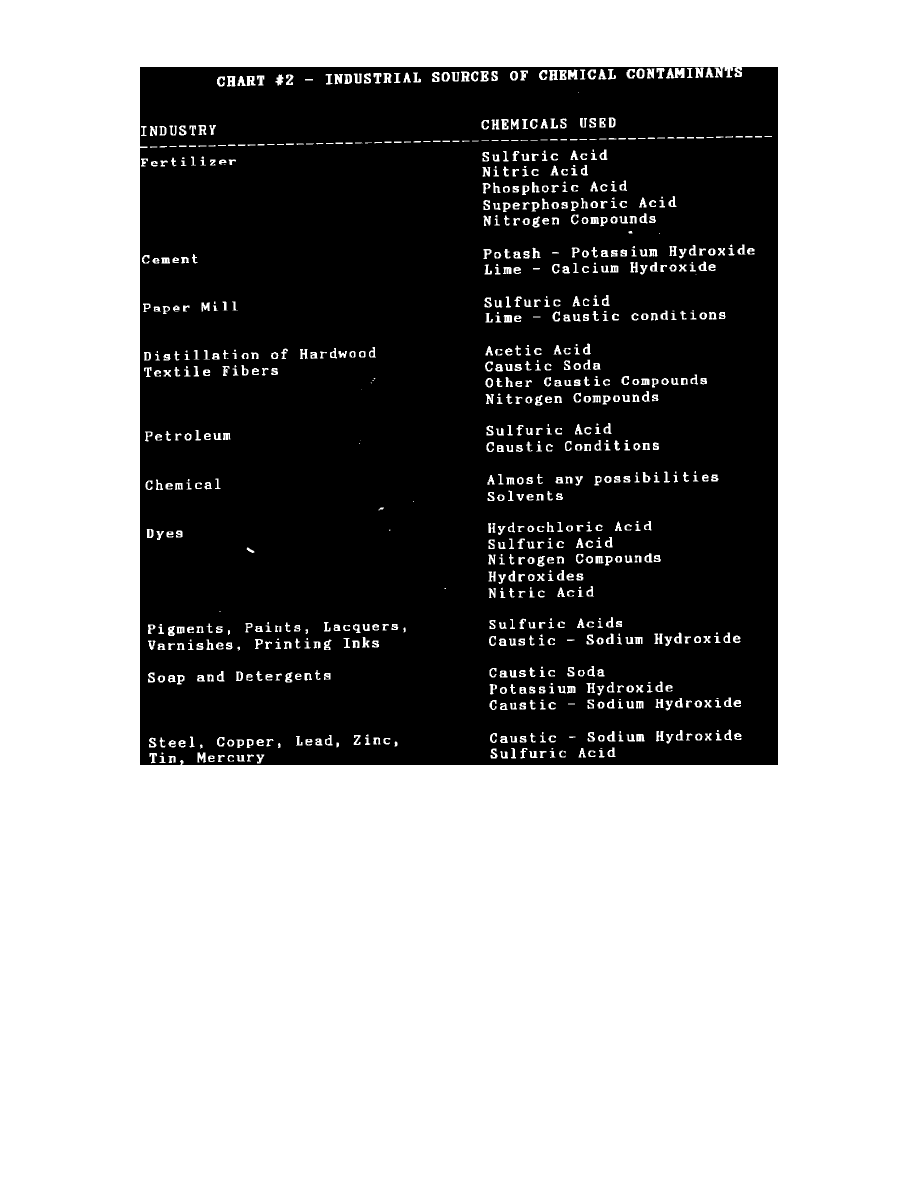405 L4-1905cc 1.9L (1989)

24 hours (Chart #1).
5.
Sources of Chemical Fallout
Chemical fallout can come from industrial sources such as the effluent from stacks of manufacturing or processing facilities or oil/coal
fired power plants. These sources may be nearby or many miles away, with their contaminants borne on the wind or released into the
atmosphere where they are dissolved by moisture and returned in the form of rain.
The attached list gives possible sources of acid/alkaline contaminants based on industries that use these types of materials (Chart #2).
6.
How to protect against Chemical Spotting:
A.
Keeping car finish clean is a key to preventing chemical spotting, although it is not always noticeable when contaminants have
deposited oil the car. A routine of a weekly thorough washing is important.
Thorough routine waxing of finishes will help to minimize chemical spotting, but will not guarantee freedom from chemical
attack. This will depend largely on the type of chemical, its concentration, and the length of time it is on the surface.
B.
Clear coating of cars can provide significant protection against chemical spotting by protecting the pigment from being discolored.
However, the clear itself can be attacked by contaminants, leaving a dull or milky spot on the finish. Urethane clears tend to be the
best for clear coat application.
C.
Freshly painted cars are more susceptible to chemical spotting than aged paint jobs. In the first 2-3 months of a new paint job, care
should be taken to regularly hose down the finish to remove accumulated contamination.
